![]()
| Proposal 3, Page 6 (continued from Page 5) | ||
| THE JULES VERNE MACHINES | ||
|
The Although the stories will be set in many different locations, there will be a permanent Jules Verne set. This will be the interior of the railcar style gondola that hangs from Fogg's helium-filled airship -his main means of traveling around the globe. On the outside, this will have the solid, brassbound, heavy-riveted look that comes to mind when we think of "The Nautilus" or Verne's moon-ship.
|
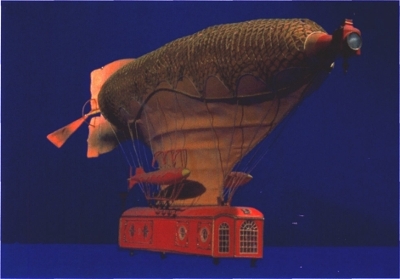 |
|
| Inside it will be furnished in Victorian hi-tech with red velvet drapes, deep armchairs, leather-bound books and gleaming telescopes. Often, the exotic locations in which Jules finds himself will only need to be suggested rather than shown, because the balloon has landed in the midst of them. | 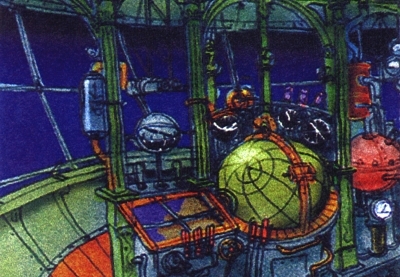 |
|
| The
Aurora is owned by Fogg, not the British Secret Service. He won it in a
wager, and its original builder wants to win - or steal - it back at any
cost. It was originally based, of course, on one of Jules' throwaway
sketches, which got into the hands of its builder by a route so devious
he never discovers it. |
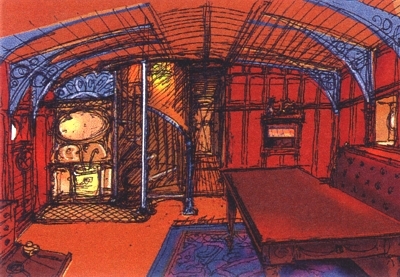 |
|
|
It is possible to deflate the Auroras' balloon and disguise the gondola as a building, a haystack or even a small wooded hill. This ensures the villains can't (usually) hijack it but can result in some embarrassment for Fogg or Jules when they hurl themselves into a private house, (or indeed a haystack) believing it to be the gondola. |
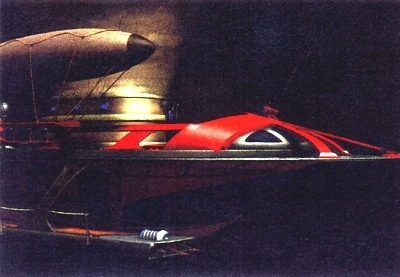 |
|
| The Phoenix
The Phoenix is the forerunner of H.G. Wells' Time Machine, and is capable of taking Jules and his friends into some of the most exciting moments of human history, from the Roman arena to the siege of Troy or the Gunfight at the OK Corral. Few people know that had it not been for Jules1 possession of the Phoenix in the year 1840, the United States might have stopped at the Rocky Mountains and California might today be controlled by a Russian Tsar. |
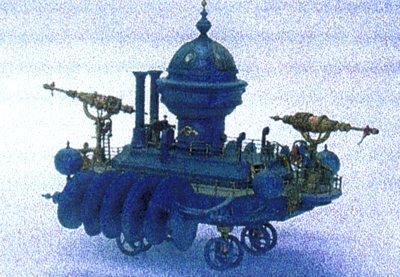 |
|
| The Etherian Flyer
One
of the most luxurious flying machines ever built, the Etherian Flyer was
created by the American railroad tycoon Ezekial Morgan to carry the cream
of American society on the first round-the-world air-cruise. Little did
Morgan know, however, that his entire crew were pirates from the Barbary
Coast, and that he was inviting his guests not on the trip of a lifetime
but into a nightmare of danger and bloodshed. Without the help of Verne, Fogg and Passepartout in the Dirigible, some of America's most distinguished citizens, including Annie Oakley, Kit Carson and Herman Melville might never have achieved their destinies. |
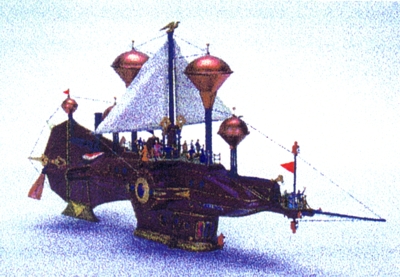 |
|
|
The Orpheus
The
Orpheus is a tunnelling device developed by the League of Darkness
to mount surprise attacks on kings, queens, military leaders and
anyone who has incurred its disfavour. Propelled by a combination
of sonic reverberations and revolving belts, it is swift and silent
Jules Verne originally encounters it when the League of Darkness
attempts to kidnap Queen Victoria; later the Orpheus is stolen
by Professor Jacques Robur in an attempt to melt the Antarctic ice-cap. |
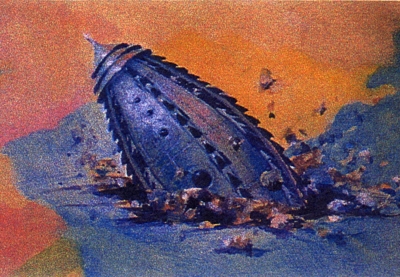 |
|
|
The Giant Moon Gun This gigantic piece of artillery, built in a hidden valley in the Urals, was designed to hurl a huge projectile hundreds of miles into the Russian capital, St Petersburg, to prevent the Tsar from freeing the serfs. As a result of Jules Verne's intervention, however, its builder, Count Kugarin, is trapped in the projectile and becomes the first man ever fired into orbit exactly a century ahead of Yuri Gagarin. Later, the giant gun will be melted down and turned into the superstructure of the Nautilus. |
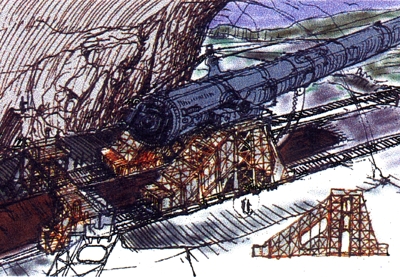 |
|
|
Calimus The Calimus is a machine inspired by the most fearsome creature of the deep, the Giant Squid, by Professor Emil Strabismus of the University of Narbonne. Designed to travel to the deepest reaches of the ocean, the Calimus will then bore into the ocean floor in search of regions unknown to man. It is in this machine that Jules Verne discovers what really happened to the lost civilisation of Atlantis. |
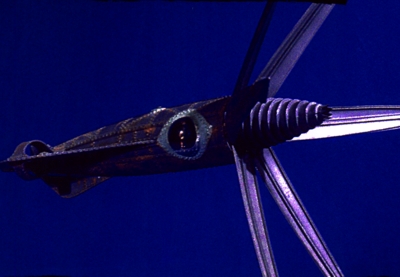 |
|
|
Victorian Airship The Victorian Airship was developed in the year 1867 by Colonel Musgrove Montgomery, late of Her Majesty's Guards, to make Britain the world's supreme air power. With a fleet of machines such as this, Colonel Montgomery planned to bring the United States back into the British Empire. How Jules Verne, Passepartout and Phileas Fogg saved President Grant from being displaced by Queen Victoria is one of the author's most exciting adventures. |
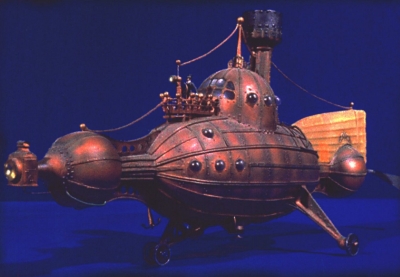 |
|
|
Hyperion Side Paddler The Hyperion Side Paddler travels the skies like a stately Greek galley - but a galley powered by steam. It was created by the wealthy aesthete William Crockett to cruise through the valleys of the high Himalayas in search of the legendary monastery of Shangri-la: and it is while journeying with Crockett that Jules Verne learns of the famous Tibetan "Book of Creation" - and finds an amazing clue to the very origins of the universe. |
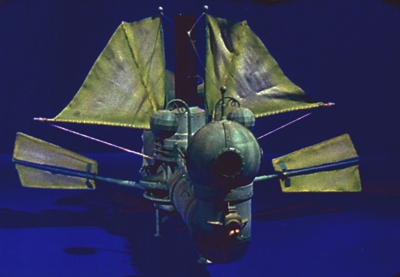 |
|
|
Amphibian Carriage The Amphibian Carriage is a pleasure-vessel capable of taking the rich and delicate on luxurious voyages on any terrain whether land or sea. When Phileas Fogg wins it in a wager aboard a Mississippi side-wheeler Jules and his friends find themselves racing the Amphibian down America's greatest river in competition with none other than Captain Mark Twain himself. |
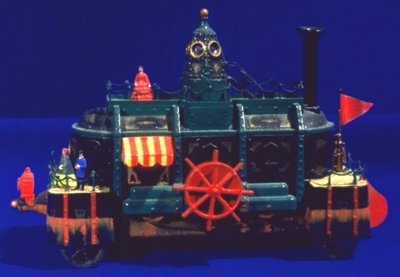 |
|
Continued on Page 7